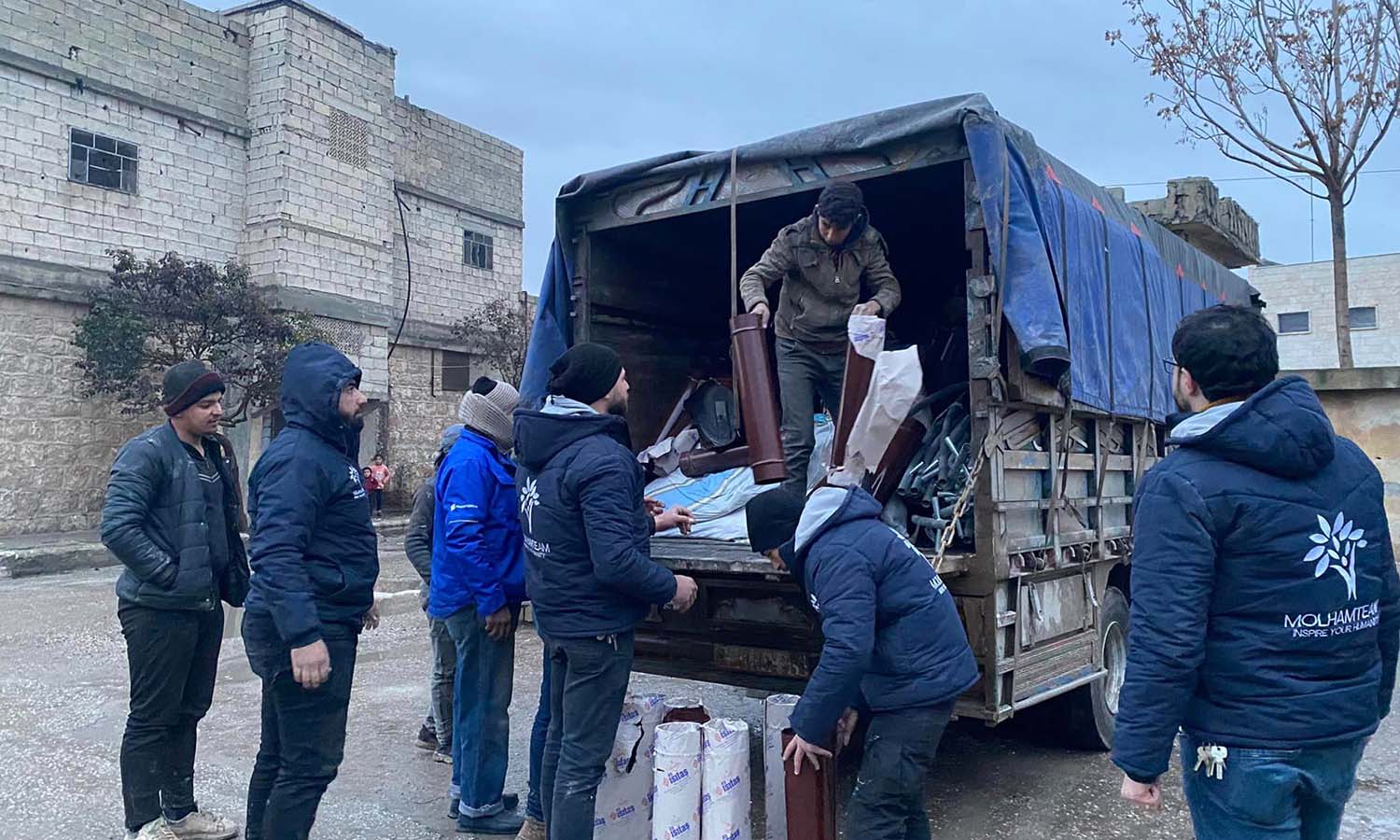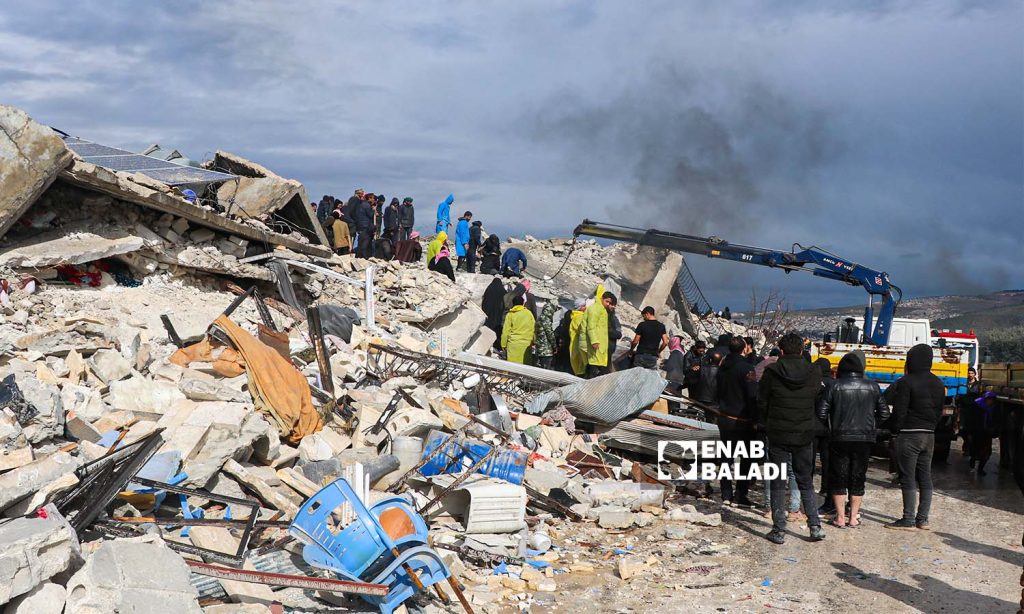A number of local relief organizations across the Syrian governorates responded to emergency humanitarian needs in an attempt to reduce human losses and rescue those affected following the powerful 7.8 magnitude earthquake that rocked wide swaths of Turkey and Syria on 6 February, killing more than 9,500 people.
While the various regions of Syria suffer from a lack of capabilities and a weak humanitarian response, the statistics of human losses and material damage show an increasing need for heavy rescue equipment, shelters, and food baskets, in addition to medical equipment.
The Molham Volunteering Team launched an emergency response campaign to secure shelter and provide urgent needs for those affected by the earthquake in northwestern Syria.
Many criticisms were directed at the team about the reasons for its support being limited to northern Syria, which the executive director of the Molham Volunteering Team, Atef Nanoua, attributed to the prevention of the team from working by the Syrian regime, which considers them “terrorists.”

The Molham Volunteering Team during operations to respond to the effects of the earthquake in the border city of al-Bab – February 7, 2023 (Facebook/Molham Volunteering Team)
The Syria Civil Defense (The White Helmets) also launched a campaign entitled “Support the Syrian Heroes” to collect donations to cover the needs of the search and rescue teams.
The Civil Defense teams have been working since the first moments of the disaster in search operations and attempts to rescue those trapped under the rubble in different regions of northern Syria.
For its part, Ghiras Alnahda organization, Usra (Family) organization, and Hathi Hayati Volunteering Group, in addition to many relief organizations, launched campaigns in response to the effects of the earthquake in northwestern Syria.
Many organizations in regime-held areas have also launched emergency response campaigns, including the “Akemha” (Sterilize it) initiative, which aims to secure medical supplies.
The Ghiras Development Association launched a campaign to collect material and in-kind aid to help families affected by the earthquake.
The Ahmad Humanitarian Project and the Hifz al-Nema association, along with the Union of Charitable Societies in Damascus, also launched campaigns to collect donations and meet the basic needs of those affected.
This comes in light of the continued airports located in the areas of influence of the Syrian regime to receive aid and rescue teams from allied countries, such as Iran and Russia, or those that have relations with the regime, such as Iraq and Algeria.
On the other hand, the border crossings between Syria and Turkey are still closed since the earthquake occurred, except for specific cases coinciding with the absence of UN and international aid destined for northwestern Syria.
Death toll increases
Thinly stretched rescue teams worked through the night in Turkey and Syria, pulling more bodies from the rubble of thousands of buildings toppled by a catastrophic earthquake. The death toll rose Wednesday to more than 9,500, making the quake the deadliest in more than a decade, according to the AP.
That makes it the deadliest since a 2011 earthquake in Japan triggered a tsunami, killing nearly 20,000 people.
In the latest statistics issued by the Syria Civil Defense teams, the death toll from the earthquake in northwestern Syria has risen to more than 1400 deaths and more than 2,700 injured, with the number expected to increase “significantly” due to the presence of hundreds of families under the rubble and the occurrence of aftershocks.
While the number of destroyed buildings increased to more than 210 completely destroyed buildings and more than 520 partially destroyed, and thousands have been cracked.
This comes in light of the low temperatures and the continued presence of a strong wind storm accompanied by heavy rain and snow in the region.
According to the latest statistics of the regime’s health ministry, the death toll in regime-held areas reached a total of 1262, while 2285 people have been injured.
The number of demolished buildings in regime-controlled areas reached 176, distributed among the governorates of Aleppo, Latakia, Hama, and Tartus.











